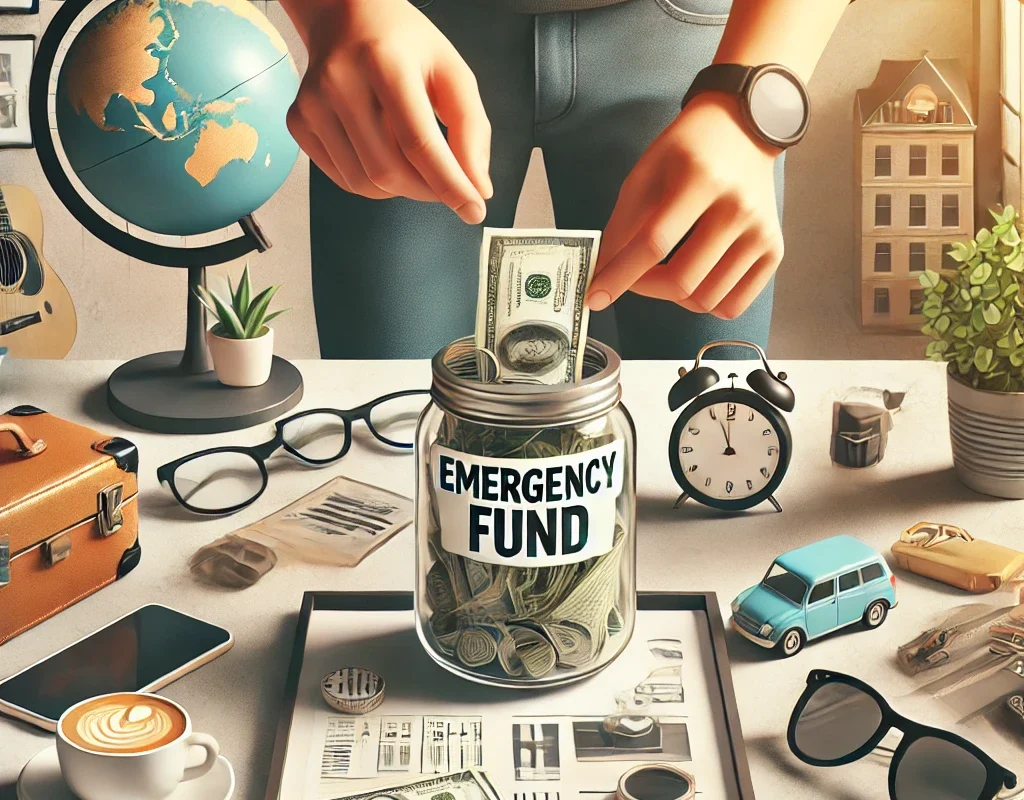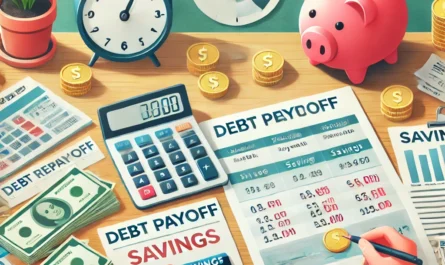Creating a financial safety net is essential, but for many, the thought of building an emergency fund often feels like it requires major lifestyle changes. What if you could achieve both — financial security and a comfortable life — without feeling deprived? This article will explore how to save for an emergency fund without sacrificing your lifestyle.
The Importance of an Emergency Fund
Life is unpredictable. From unexpected medical bills to car repairs or job loss, emergencies can happen at any time. Having an emergency fund ensures you are financially prepared for life’s surprises without needing to rely on credit cards or loans. This safety net can protect you from going into debt or from needing to adjust your daily lifestyle drastically during tough times.
An emergency fund should ideally cover three to six months’ worth of expenses. However, that might feel overwhelming if you’re just starting out, especially if you don’t want to compromise on your lifestyle. The good news is, with the right strategies, you can build this financial cushion without feeling like you’re giving up the things you love.
Understanding Your Financial Priorities
Before diving into saving, it’s important to take a moment to assess your current financial habits. What are your non-negotiables? Maybe it’s dining out with friends or traveling a few times a year. On the flip side, what expenses could be trimmed without causing a significant hit to your happiness? This exercise helps you understand where to adjust spending and where to protect the things that matter most.
By aligning your savings goals with your lifestyle, you’ll feel empowered rather than restricted. Saving doesn’t have to be about deprivation. It’s about balancing priorities.
Creating a Realistic Emergency Fund Goal
Start small. Setting a goal of saving three months of living expenses right off the bat can feel daunting. Instead, break that larger goal into more manageable chunks. For instance, begin with a goal of saving $1,000 as a starter emergency fund. Then, work toward building it up in increments.
This method not only makes saving more manageable but also provides you with small wins along the way. Each milestone achieved can boost your motivation without affecting your day-to-day lifestyle.
The 50/30/20 Budgeting Rule
The 50/30/20 budgeting rule is a simple and effective way to ensure you’re saving without sacrificing your lifestyle. Here’s how it works:
- 50% of your income goes to essential expenses (rent, utilities, groceries).
- 30% can be allocated to discretionary spending (dining out, entertainment, shopping).
- 20% should go toward your financial goals (savings, debt repayment, investments).
By structuring your budget in this way, you can prioritize both saving and enjoying life. This method doesn’t demand you to completely cut out fun spending, but it encourages a balanced approach to ensure you’re still building your emergency fund.
Automating Your Savings for Stress-Free Success
One of the easiest ways to ensure you’re consistently saving for your emergency fund is to automate the process. Set up a recurring transfer from your checking account to a savings account specifically for emergencies.
The beauty of automation is that once it’s set up, you don’t have to think about it. You won’t feel the temptation to spend that money on something else. Over time, you’ll build your emergency fund with little effort and minimal impact on your lifestyle.
The Role of Side Hustles in Growing Your Emergency Fund
If you’re looking to accelerate your savings without touching your primary income, consider a side hustle. The beauty of today’s gig economy is that there are so many flexible options available, from freelancing online to offering services in your local community.
You don’t need to take on a second full-time job. Even dedicating a few hours a week to something you enjoy — like photography, writing, or tutoring — can quickly boost your emergency fund. Best of all, this extra income can grow your savings while allowing you to maintain your regular spending habits.
How to Cut Costs Without Feeling Deprived
Saving money doesn’t always mean cutting out the things you love. Sometimes, it’s about finding smarter ways to spend. Here are a few tips to save without feeling the pinch:
- Shop for groceries with a plan: Meal planning can help you avoid impulse purchases and food waste.
- Use cash-back apps: Tools like Rakuten or Ibotta give you money back on everyday purchases.
- Negotiate bills: Call your internet or phone service provider to see if they can offer you a better deal.
Small changes like these add up over time, making it easier to build your emergency fund without major sacrifices.
Optimizing Your Subscription Services
In today’s digital age, it’s easy to accumulate multiple subscription services. Whether it’s for streaming, meal kits, or gym memberships, these costs can add up quickly. Take the time to review your subscriptions and ask yourself if you’re truly using them.
For those services that you don’t use frequently, consider canceling or switching to a more affordable plan. You’ll be surprised how much money you can save by cutting out unused subscriptions.
The Power of Cash-Back Apps and Reward Programs
Cash-back apps and reward programs are a great way to boost your savings on the things you’re already purchasing. Many credit cards offer cash-back rewards on groceries, gas, or dining out. Similarly, apps like Fetch Rewards or Honey allow you to earn points or cash for purchases.
These savings can quickly add up, providing a way to contribute more to your emergency fund without reducing your spending on fun activities. The key is to be disciplined and ensure you’re not overspending just to earn rewards.
Smart Spending: Prioritize Quality Over Quantity
One of the most effective ways to save in the long run is to adopt a quality-over-quantity mindset. For example, buying a more expensive, high-quality jacket may cost more upfront, but it will last you years compared to buying cheaper jackets every season.
This same principle can apply to many areas of life — from clothing to household items and even electronics. Investing in durable, well-made products can reduce your spending over time, helping you grow your emergency fund without needing to cut back on other areas of your lifestyle.
Dining Out Without Blowing Your Budget
You don’t have to give up dining out to save for an emergency fund. Instead, consider a few tricks to keep your dining expenses under control. Opt for restaurants that offer early bird specials or weekly deals. You can also try splitting dishes, which not only cuts costs but often helps with portion control.
Another great tip is to limit the number of drinks you order. Alcohol and specialty beverages can quickly increase the total cost of your meal. By sticking to water or opting for just one drink, you can enjoy eating out without overspending.
FAQs
What is an emergency fund, and why do I need one?
An emergency fund is a dedicated amount of savings set aside for unexpected expenses. It’s essential because it prevents you from going into debt or making drastic changes to your lifestyle during financial emergencies.
How much should I aim to save in an emergency fund?
Financial experts recommend saving three to six months’ worth of living expenses. However, starting with a smaller, achievable goal — such as $1,000 — is a great first step.
Can I still travel or dine out while saving for an emergency fund?
Absolutely! The key is to plan wisely and make adjustments. For instance, you can find affordable travel deals and opt for dining specials to enjoy these activities without compromising your savings goals.
Is it better to save a little each month or try to save in larger amounts?
Consistency is key when building an emergency fund. Even small, regular contributions add up over time and are often more sustainable than trying to save large amounts sporadically.
What are some easy ways to cut expenses without affecting my lifestyle?
Small changes, such as using cash-back apps, cutting unused subscriptions, and meal planning, can save you money without major sacrifices.
Can I use a side hustle to grow my emergency fund?
Yes, a side hustle is a great way to supplement your income without touching your primary earnings. Look for opportunities that fit your schedule and skills.
Conclusion
Building an emergency fund is one of the most important steps toward financial security, and the best part is, you don’t have to sacrifice your lifestyle to do it. By making small, intentional adjustments and using strategies like automation, smart spending, and cash-back rewards, you can steadily grow your savings while continuing to enjoy the things you love.



